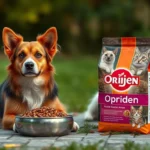
Maintaining proper dog nutrition is essential for your furry friend’s overall health and well-being. As dog owners, we often wonder about the safety and nutritional value of various food options, one of which is tripe. This article explores the benefits and potential risks of feeding tripe to dogs, helping you make informed decisions about your dog’s diet.
Understanding Dog Nutrition
Basics of Canine Nutrition
To ensure optimal health, dogs require a balanced diet that includes essential nutrients such as proteins, fats, carbohydrates, vitamins, and minerals. Each nutrient plays a vital role:
- Proteins: Crucial for growth, muscle development, and overall body maintenance.
- Fats: Provide energy and support cell structure and skin health.
- Carbohydrates: Offer additional energy and aid in digestion.
- Vitamins and Minerals: Essential for various bodily functions, including bone health and immune system support.
A well-rounded diet helps prevent health issues and promotes a long, active life.
Common Food Myths
There are several misconceptions about dog food that can lead to poor dietary choices. For instance, many people believe that dogs can thrive solely on a meat-based diet. However, a balanced diet includes a variety of nutrients, combining meat, vegetables, and grains.
Furthermore, the debate between commercial dog food and homemade diets continues. While commercial food is formulated to meet canine nutritional needs, homemade diets can also be beneficial if prepared correctly. It’s essential to understand that not all human foods are safe for dogs.
Introduction to Tripe
What is Tripe?
Tripe is a type of edible offal that comes from the stomachs of ruminant animals, primarily cattle and sheep. There are different types of tripe, including:
- Green Tripe: Unbleached and contains natural digestive enzymes and probiotics.
- Bleached Tripe: Processed and cleaned, often lacking some of the beneficial nutrients found in green tripe.
Both forms can be used in dog diets, but green tripe is generally considered more nutritious.
Nutritional Profile of Tripe
Tripe boasts a rich nutritional profile that can be beneficial for dogs. Key nutrients in tripe include:
- Protein: High-quality protein that supports muscle growth and repair.
- Omega Fatty Acids: Essential for skin and coat health, reducing inflammation.
- Probiotics: Beneficial bacteria that support gut health and digestion.
When compared to other protein sources such as chicken or beef, tripe offers a unique blend of nutrients that can enhance your dog’s diet.
Can Dogs Eat Tripe?
Benefits of Feeding Tripe to Dogs
Feeding tripe to dogs can provide several health benefits:
-
High Protein Content and Digestibility: Tripe is easily digestible, making it suitable for dogs with sensitive stomachs. The protein content supports muscle maintenance and energy levels.
-
Source of Probiotics: The natural probiotics in tripe can help regulate gut flora, leading to improved digestion and nutrient absorption. This is particularly beneficial for dogs prone to digestive issues.
-
Essential Fatty Acids: Tripe contains omega-3 and omega-6 fatty acids, which play a crucial role in maintaining a healthy skin and coat, as well as reducing inflammation.
Potential Risks and Considerations
While there are many benefits to feeding tripe, there are also potential risks to consider:
-
Possible Contaminants: Raw tripe may carry bacteria or parasites that can pose health risks. It’s crucial to source high-quality tripe from reputable suppliers to minimize these risks.
-
Allergic Reactions: Some dogs may have allergies or sensitivities to certain proteins, including those found in tripe. Monitor your dog for any adverse reactions when introducing tripe into their diet.
-
Sourcing Quality Tripe: Ensure that the tripe you choose is fresh and safe for consumption. Avoid low-quality options that may lack nutritional benefits.
How to Safely Introduce Tripe into Your Dog’s Diet
Preparing Tripe for Dogs
Tripe can be offered in various forms, including:
-
Raw Tripe: Often considered the most nutritious option, but requires careful handling to prevent contamination.
-
Freeze-Dried Tripe: Retains nutritional value while being shelf-stable and easy to store.
-
Canned Tripe: Convenient but may contain additives. Choose options with minimal processing.
When preparing tripe, always wash your hands and any utensils thoroughly to prevent cross-contamination. Store tripe in the refrigerator or freezer to maintain freshness.
Portion Control and Serving Suggestions
When introducing tripe to your dog’s diet, portion control is vital. Guidelines for how much tripe to feed your dog depend on factors such as size, age, and activity level. As a general rule of thumb:
- Small Dogs: 1/4 to 1/2 cup per serving.
- Medium Dogs: 1/2 to 1 cup per serving.
- Large Dogs: 1 to 2 cups per serving.
Start with small amounts to see how your dog reacts, and gradually increase if there are no adverse effects. You can mix tripe with other foods to create a balanced meal, such as combining it with vegetables or grains.
Alternatives to Tripe
Other Protein Sources
If you’re considering alternatives to tripe, several other nutritious protein sources can support your dog’s diet:
- Chicken: Lean and easily digestible, rich in protein and vitamins.
- Beef: Provides essential amino acids and fats.
- Fish: Excellent source of omega-3 fatty acids, beneficial for skin health.
- Plant-Based Proteins: Options like lentils and chickpeas can be included for vegetarian diets.
Each protein source has its nutritional profile, so it’s essential to vary your dog’s diet to meet their nutritional needs.
Supplements for Gut Health
If tripe is not suitable for your dog, there are other ways to support gut health:
- Probiotic Supplements: Products designed for dogs can help maintain a healthy gut flora.
- Digestive Enzymes: These can aid in breaking down food and improving nutrient absorption.
Consulting with your veterinarian can help you choose the best supplements for your dog’s specific needs.
Consulting with a Veterinarian
Importance of Professional Guidance
Before making significant changes to your dog’s diet, consulting with a veterinarian is crucial. They can help you determine whether tripe is a suitable addition based on your dog’s health and dietary requirements.
Signs that your dog may not be tolerating tripe well include:
- Vomiting or diarrhea
- Excessive gas or bloating
- Changes in appetite or energy levels
Tailoring Diet to Individual Needs
Every dog is unique, and factors such as breed, age, and activity level can influence their nutritional requirements. For dogs with specific health conditions, such as allergies or sensitivities, a tailored diet is essential. Your veterinarian can help you navigate these challenges and create a customized meal plan that ensures your dog receives the nutrients they need.
Conclusion
In summary, tripe can be a nutritious addition to your dog’s diet, offering numerous health benefits such as high protein content, probiotics, and essential fatty acids. However, it’s essential to consider the potential risks, including contamination and allergies, when introducing tripe to your dog’s meals.
By understanding the fundamentals of canine nutrition and how to safely incorporate new foods, you can make informed decisions that promote your dog’s health. A balanced diet is vital for maintaining a happy and healthy dog, ensuring they lead a long and active life.









